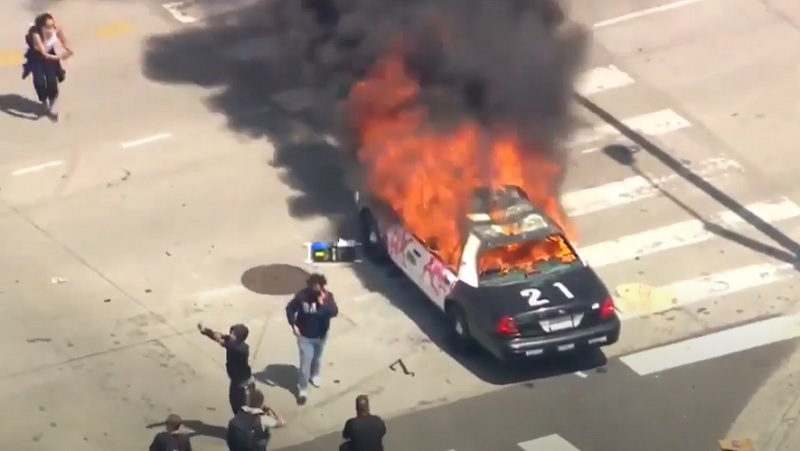
It didn’t take long for the citizens of Los Angeles to suffer the consequences of rash political decisions aimed at satisfying police critics. Hundreds more LA residents suffered murder and violent injury during 2020, a year of knee jerk decisions by politicians. In the most counterintuitive strategy since the use of blood-letting leeches on the sick, policing was discouraged, pulled back, and defunded in a time of chaos and disorder.
In November of 2020 LAPD Chief Michael Moore announced that the $150 million budget cut to his department would result in cuts to its air support, robbery and homicide and gang and narcotics units. A reduction of 350 sworn officers and a number of civilian staff accompanies a reduction in reduced desk hours at its stations, and special deployments. The department will cut its air support, robbery and homicide and gang and narcotics units and stop staffing teams that cover homelessness issues. Los Angeles schools had already canceled a third of its school resource officers.
Activists were calling for a 90% cut to the LAPD budget.
In an apparent attempt to convince the public that this was a move forward, the Chief stated that the changes were part of a broad reorganization geared to preserving patrol and community engagement functions. Moore was already facing sinking morale amid reports that officers had little confidence that the Chief and political leaders of the city were supporting the department. He had issued a letter of apology to his officers about comments made during the summer’s disturbances and demands for police reform.
Spring hadn’t even sprung when Los Angeles began to open their eyes to the bloodshed Angelenos suffered while police operations were being cut. Homicides increased by more than a third and the increase in non-lethal shootings was over 40%. The Metro Transit Authority increased their budget by $36 million to enhance safety on their systems. The decision was made by the governing board of the area transit system whose chairperson voted in favor of the increase. The chairperson is none other than LA Mayor Eric Garcetti, a major cheerleader of defunding his own city’s police.
Agreements with LAPDs officer associations have been reached to maintain pension and insurance benefits, along with some promised salary increases.
Meanwhile, to no intelligent person’s shock, Minneapolis ponders how to get rid of it’s police department while simultaneously spending over $6 million dollars to recruit officers. While politicians debate, there has been a 250% increase in gunshot victims so far this year in the city.
Myopic observers seem to be afraid to point to the evisceration of law enforcement as a direct cause of the increase in violence. Everything from climate change to COVID-19 to the Trump presidency has been offered up as a theory, with the occasional nod to a reduction in police activity. It is hard to measure both the fear and “fedupness” that police officers feel in deciding to perform their duties. Optional activities such as contacting suspicious persons, enforcing traffic laws, and high visibility patrol are often curtailed to avoid confrontations that can be the target of criticism and accusations. These preventive activities long been a lawful and expected aspect of basic police work. But the public will never be policed beyond their acceptance of law enforcement. The fewer people who appreciate and encourage effective law enforcement and are willing to make that known to policy makers, the less law enforcement activity they will see.
The grand experiment with defunding LAPD and taking police dollars to fund community groups and non-law enforcement responses is being replicated in cities across the United States. It is not just our police officers being attacked and discouraged, it is the blood of citizens who are being failed by politicians catering to the loudest voices and not to fact and reason.